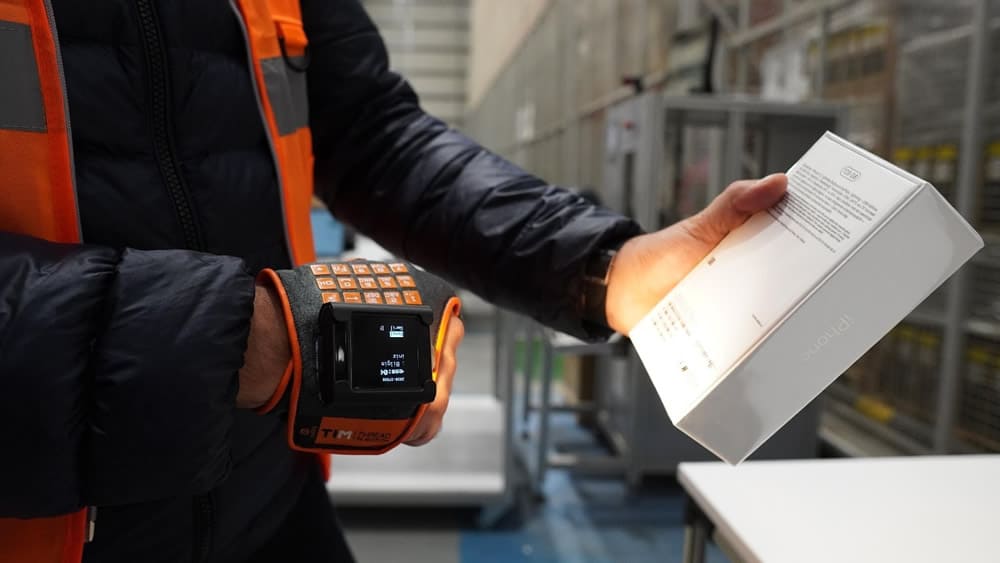6 Key Benefits of Wearable IIoT for Industrial Operations
The Industrial Internet of Things (IIoT) has transformed the way businesses operate. By leveraging sensors, cloud computing, and advanced analytics,...
5 min read
Işık Handan : Nov 1, 2021 4:49:46 PM
It’s always difficult to catch up with the trends in fast-paced environments and industries like the IoT. From wearables to high-end systems in the back end, you need a go-to source to keep up with the innovation that is always at the door, and what IoT-industry people talk about.
We’ve explained the IoT and wearables terminology so that you can learn from what’s going on in the industry and seize the opportunities that await your business.
Let’s illuminate the internet of things for real!
Access point: A wireless network device that acts as a portal, designed to transmit the devices that need to be connected to the local area network.
Actuator: A system/device that receives a low energy control signal and converts it into mechanical motion to move and control a mechanism.
AI / Artificial intelligence: Systems that process data and use machine learning to mimic human-like capabilities like reasoning, planning, and learning to perform tasks.
API / Application Programming Interface: A computer code that enables software to transmit data to other software, allowing the shared users to merge normally isolated data and features. API systems are increasingly the primary tools for data transmission between two or more software systems.
APN / Access Point Name: A gateway that translates communication between mobile networks and computer networks.
Barcode: A printed identification code that consists of unique characters, traditionally in thin and thick lines, used in every industry for traceability throughout the product life cycle.
Beacons: Small transmitters that connect to devices with Bluetooth and Bluetooth Low Energy (BLE) capabilities, such as smartphones.
Big Data: It is a name given to the amount of data that traditional technologies cannot handle in inference or analysis. Some IoT technologies specialize in moving and transferring big data, as it is seen as a key point in the goal of large companies to maximize productivity growth.
Cloud Computing: It is the name given to the internet-based computing system that allows data access from different computers and devices. While it is generally thought that the 'cloud' itself stores data, the data is stored on physical computers that allow access to the data over the Internet at any time.
Computer vision: Computer vision is a part of computer science that sees images it receives similar to human vision, defines it, and tries to make it work.
Cyber-physical system: These systems of computation, networking, and physical processes provide integration with the feedback loops that affect computations.
Deep learning: It is a machine learning technique that teaches computers to learn by example.
Device: A device is a unit of equipment. Represents physical hardware that provides at least 1 computing function within a system.
Digital twins: Digital Twins, which can be used for various purposes, integrate historical machine data into the digital model. This integration is a digital copy of physical assets, processes, people, places, systems, and devices.
Digital Transformation: Digital transformation is the strategic application of digital technologies to life. It is used to improve processes and productivity, deliver better customer and employee experiences, manage business risk, and control costs. Digital transformation represents countless solutions and processes. An effective technology strategy must be customized to each unique organization.
Edge computing: It is a model that does not take place in a central cloud environment, but rather is distributed device nodes known as smart or edge devices.
Industry 4.0: It is the name given to the current automation and data exchange in production technologies. It includes cyber-physical systems, the internet of things, cloud computing, and cognitive computing.
Flow-based programming: A type of data flow programming term in which programs communicate with each other by transmitting data through various channels. Channels are managed by the larger system. It frees the connected components to focus on their inputs and outputs.
Fog computing: Fog computing, also known as edge computing or fogging, is a term coined by Cisco that means expanding a cloud computing company's network.
Gateway: It provides communication between two computers or devices. Thanks to the gateway, data is transferred between devices and the communication of the devices can also be called a “dial hub”.
Geofencing: Creating a virtual geofence where devices can operate using GPS or RFID technology.
Hub: This hardware device connects other data transmitting devices to a central station.
IaaS / Infrastructure as a Service (IaaS): A form of cloud computing that provides computing resources and is virtualized over the Internet.
IIoT: Industrial Internet of Things is an umbrella term for M2M technology when it focuses only on industrial machines.
IOE: The term Internet of Everything is another term for IoT coined by Cisco and still used today. Accordingly, the IoT consists not only of things, but also of data, processes, and people.
IoT: The Internet of Things (IoT) was invented in 1999. It appears like a natural extension of the Internet to everyday objects. According to this term, IoT is an emerging form of technology built around “enabler” things like networking, embedded device, and artificial intelligence. Also, IoT standards are set by the same institutions that helped drive the growth of the Internet. IEEE, together with IETF, several private institutions carry out this design.
JIT (Just In Time): It is an inventory management process that is planned to ensure that materials and labor are delivered or replenished in a timely manner during the production process, that is, when needed.
LORA: A form of Long Range, low power wireless standard that aims to provide a low data but fast communication network in cellular style is called LORA. Targeting the M2M and IoT market, LoRa is suitable for both wearable technology space and intermittent low data rate connectivity over significant distances.
LTE-E: LTE-M is used to refer to the LTE-MTC standard defined by the GSMA, more specifically LTE CatMl. LTE-M is Low Power Wide Area technology that enables an LTE installed base to be reused in extended coverage.
M2M: The term Machine-to-Machine is a communication style that mostly uses instantaneous data transfer and allows large (sometimes industrial) machines to transfer data among themselves for higher efficiency and to eliminate pre-problems.
Maas (Management-as-a-Service): It is the management of networks and systems offered to the customer in the web interface. In a way, it is a special part of SaaS, where the first "S" is the management software.
Machine learning: Machine learning is based on the idea that systems can make decisions with minimal human intervention by learning from data and identifying patterns. This idea is a method of data analysis that automates the construction of analytical models.
Mechatronics: Mechatronics is a combination of robotics, electronics, computing, telecommunications, systems, control, and product engineering. It can also be explained as the engineering of both electrical and mechanical systems.
NB-IoT / Narrowband IoT: A narrowband radio technology specifically designed for the Internet of Things (IoT) is called NB-IoT. The particular focus of this standard is indoor coverage, low cost, long battery life, and a large number of devices. This technology can be positioned in the GSM and LTE spectrum.
Neural networks: This computer system is modeled on the human brain and nervous system, designed to help machines become more like humans.
PaaP / Platform as a product: It is a model that uses an off-the-shelf platform (usually IoT platforms) as a product. Platforms that provide this come with a feature called white-label. The white-label feature makes it possible to customize the platform completely to your brand.
PaaS / Platform as a Service (PaaS): It is a cloud computing model known as the delivery of hardware and software tools to users over the internet.
SaaS / Software as a service: A delivery model licensed on a subscription basis. Also known as a centrally hosted software license.
SCE / Supply Chain Application: Focuses on applications to drive warehouse management systems (WMSs), shipping management systems (TMSs), global trade management (GTM) systems. Also included are other execution applications such as real-time decision support systems and supply chain visibility.
Servitization: Describes industries that use their products for a recurring subscription rather than selling a product all at once.
SKU / Stock Storage Unit: Often referred to as the service code that helps track the product for inventory, and the product code, which is represented as a machine-readable barcode.
Smart factory: A wide production category is planned in order to optimize the production process. This planning is the Smart Factory system that brings technology to the last point. Also known as the dark factory, this system works unmanned and is based on machines.
Wireless: Technologies that allow a smart card, mobile phone or other devices to be connected wirelessly, that is, contactless, to an electronic reader system, often in order to make a payment or be transferred to a link.

The Industrial Internet of Things (IIoT) has transformed the way businesses operate. By leveraging sensors, cloud computing, and advanced analytics,...

People are encouraged to focus on ways to optimize these processes as goals such as minimizing tag time in production processes, being able to output...

Over the past decade, the use of wearable devices has spread through a number of industries. Wearable devices could help the IIoT achieve massive...